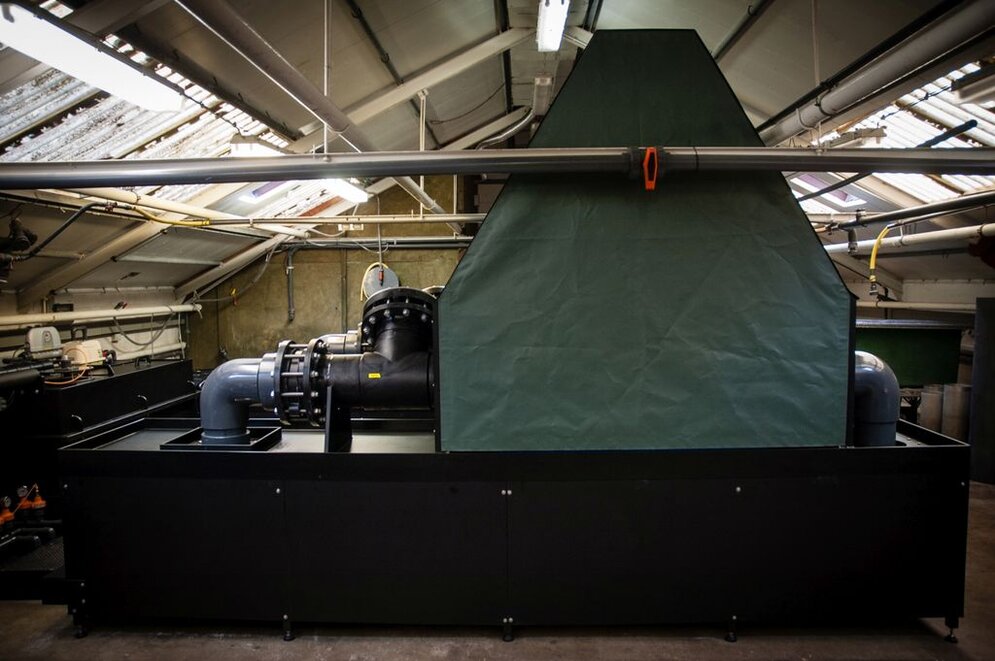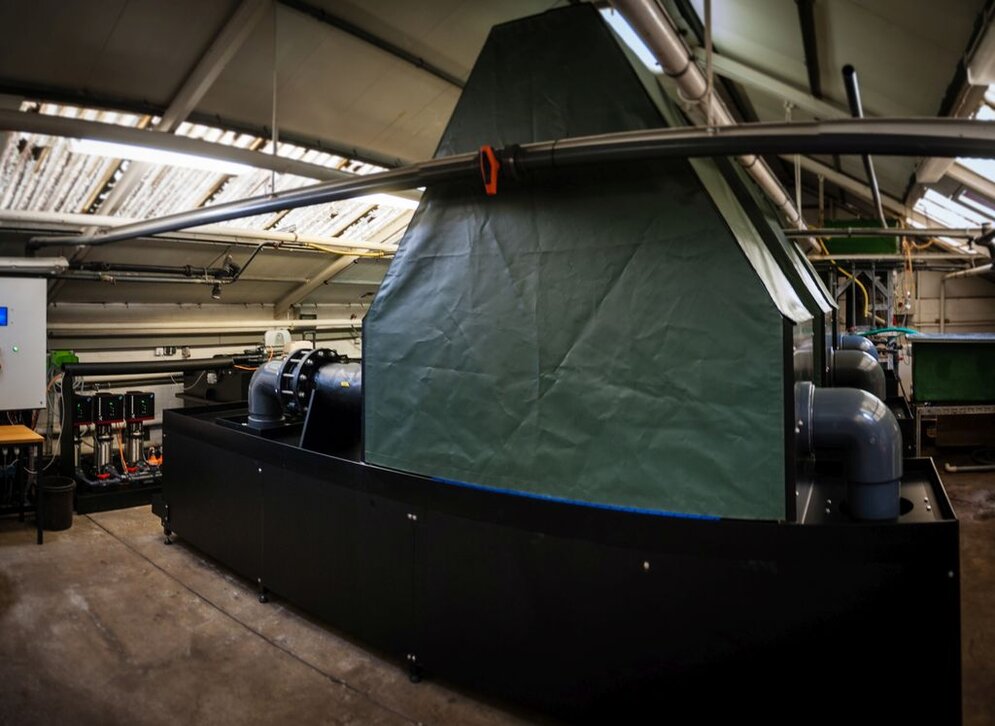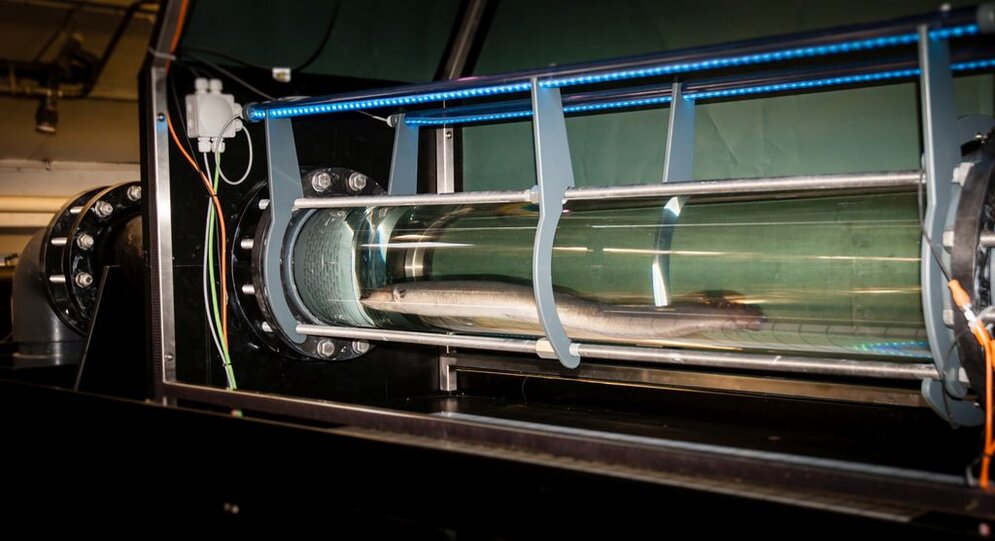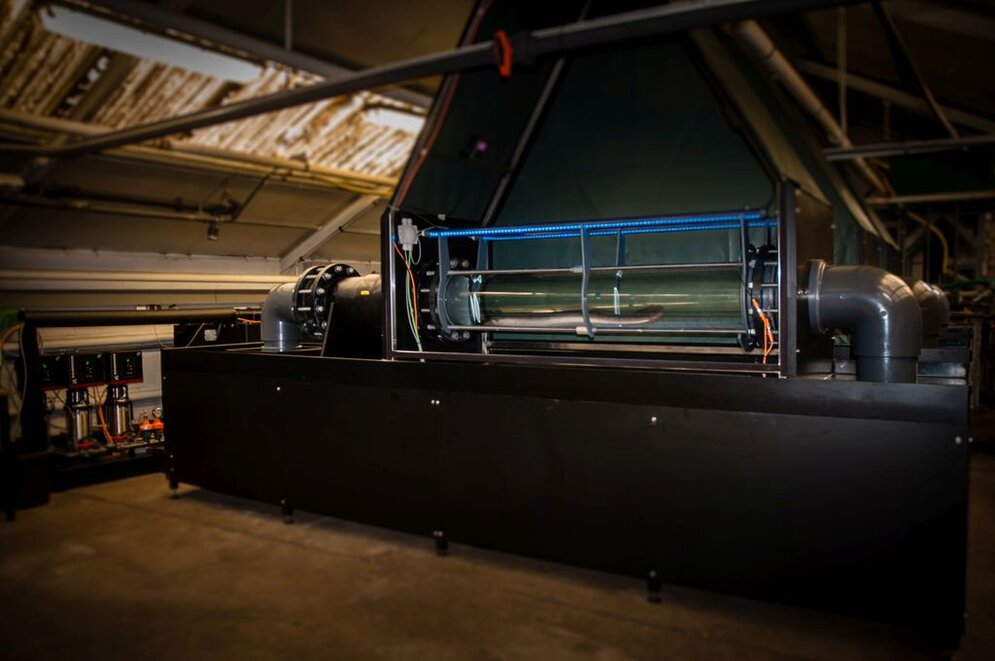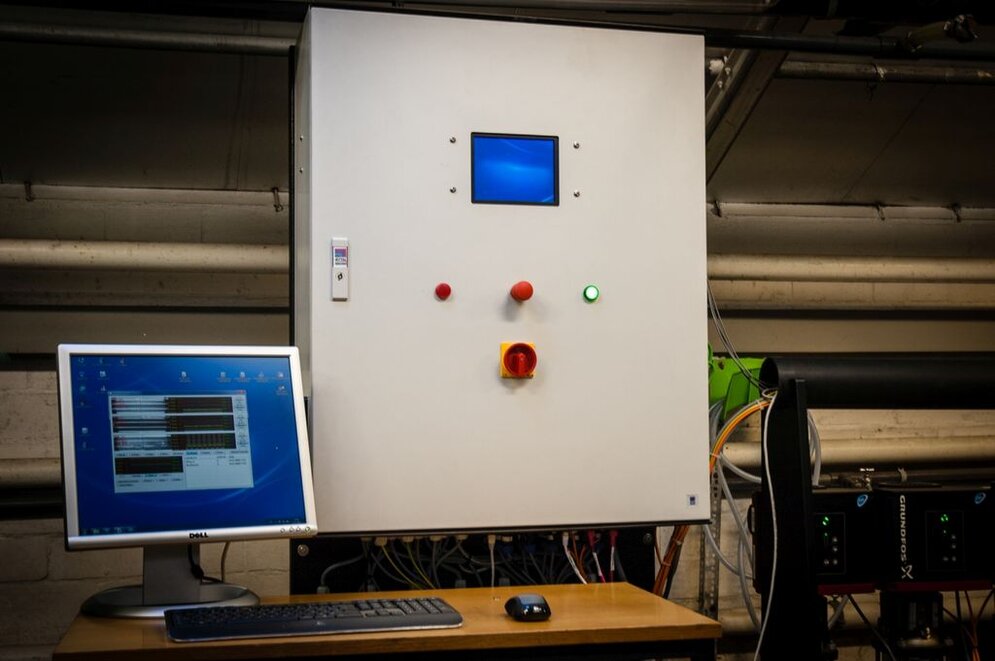Project
The effects of hydrostatic pressure on the swimming physiology of eels
The swimming physiology of the European eel under regulable hyperbaric conditions (SPEER)
Recruitment of the European eel has been in decline since the 1980s. So far, the population has not recovered and is considered „critically endangered“. The species has a complex life-cycle which still poses a variety of unresolved questions, including the effects of hydrostatic pressure on the eel’s metabolism. Detailed experimental studies could improve our knowledge on possible physiological changes during the long-distance spawning migration to the Sargasso Sea. With our novel hyperbaric swim tunnel respirometer system, the conditions during the early marine phase of the spawning migration can be simulated and the energy expenditure of the eels during swimming can be measured under controlled conditions.
Background and Objective
During their approximately 6,000 km long migration to the Sargasso Sea, eels exhibit regular diel vertical movements (DVM) with amplitudes of several hundred meters, which already start in the near-coast shelf areas. As a consequence of these DVM, the eels are confronted with considerable changes in hydrostatic pressure. With changes of 0.1 MPa per 10 meter depth the variability of the pressure is comparable to other physical and chemical parameters, like temperature, salinity, oxygen concentration or light.
However, the effects of hydrostatic pressure on marine animals are complex and can in vivo be hardly separated from the effects of other factors.
Therefore, in an earlier project („Anpassung und Weiterentwicklung von innovativen, nicht-invasiven Monitoringsystemen und Auswerteverfahren für die Fischereiforschung“ AutoMAt; WP4 „Wie wandern Blankaale zurück ins Meer“), together with our partner Kunststoff-Spranger GmbH, our institute developed three hyperbaric swim tunnels with respirometer function. These will enable studying the effects of hydrostatic pressure at defined swimming speeds and temperatures on the energy balance of eels over longer periods.
In cooperation with the University of Innsbruck we will investigate the effects of hydrostatic pressure on the metabolism of eels during their spawning migration, thereby improving our understanding of potential effects of environmental factors like parasites or contaminants on the swimming capacity of eels. In addition, it will be investigated to what extent the maturation of the gonads influences the energy consumption of eels during swimming.
Approach
In the frame of the SPEER project we will conduct comprehensive experiments on the swimming physiology of European eels under controllable hydrostatic pressure. The accompanying investigations will be conducted on different levels: molecular (RNAsequencing, enzyme activity), tissue specific (swim bladder, gonads) and whole organism (respiration). We intent to conduct experiments of different length (short-, intermediate-, long-term).
The eels will be confronted with different currents, temperatures and pressures, which will reflect natural conditions.
As an important aspect, the experiments will be conducted with eels from different German river systems. Accordingly, the fish will differ in their condition at the start of the migration, in particular regarding infestation with parasites and contaminant load. These studies will shed light on the question, if and to what extent detrimental environmental factors affect the spawning migration and possibly prevent a successful reproduction.
Results
Effects of different temperatures and hydrostatic pressures on oxygen consumption of eels were analyzed in a series of swimming experiments in a swimming tunnel with respirometer function. To quantify the effects and interactions of pressure and temperature on the oxygen consumption rate, eels were exposed to three different temperatures (19°C, 15.5°C and 12°C) and two pressures (1 and 8 bar). No interaction between temperature and pressure was found, but the results revealed an increase of oxygen consumption at higher temperatures.
In a second approach, it was investigated whether energy requirements of female eels are influenced by the gonadal maturation. For this purpose, the animals were injected with hormones over a period of up to 136 days, which induced and promoted gametogenesis. The preliminary data indicate a slight increase in oxygen consumption with progressive maturation, which indicates an increased energy requirement due to gonad development.
Under the lead of our project partners from the University Innsbruck the effect of prolonged swimming under elevated hydrostatic pressure on swimbladder function was investigated. Transcriptomic analyses in gas gland cells were conducted and an effect of Anguillicola crassus infestations on gene expression was shown.
Thünen-Contact

Involved Thünen-Partners
Involved external Thünen-Partners
-
Universität Innsbruck
(Innsbruck, Österreich)
Funding Body
-
Deutsche Forschungsgemeinschaft (DFG)
(national, öffentlich)

![[Translate to English:] [Translate to English:]](/media/_processed_/2/9/csm_Embryo-Exp_Gelege_9F_dpf5-200513111619_c8534a8199.jpg)
![[Translate to English:] [Translate to English:]](/media/_processed_/2/9/csm_Embryo-Exp_Gelege_9F_dpf5-200513111619_9027994d44.jpg)
